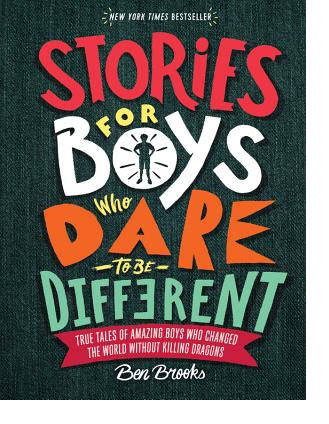Now is a golden age of juvenile literature. The books in print today are beautiful and meaningful works of art that are more inclusive, interesting and useful than at any time.
Our new digital economy allows authors, illustrators and publishers to react quickly to consumer preferences and produce books that can shift the landscape of juvenile literature in the blink of an eye.
Below are five trends in juvenile literature to keep an eye on in 2019. This is, of course, not an exhaustive list of trends. It’s simply a snapshot of a few trends that will affect libraries, schools and most of all, readers.
- Nuanced history

Over the past decade, myriad books and movies have been released that tell a more human side of WWII, The Great Depression and other important historical events. This approach is now entering juvenile literature.
An example is Stand Up Against Hate by Mary Cronk Farrell. The well-crafted book tells the story of African-American women who enlisted in the U.S. Army during WWII.
Due out later this year is Born to Fly: The First Women’s Air Race Across America. The book chronicles early feats of Amelia Earhart and other female aviators who participated in the first women’s air race across America.
Look for many more nonfiction books for children that tell individual stories that illuminate history.
–
–
2. Exit the Dragon

Juvenile fantasy has been besieged by dragons over the past five years. Readers, teachers, and especially librarians are ready for something different—ideally less reptilian.
Enter the queen, king, or a royal interloper.
2018 saw the conclusion of two pioneering series of this rapidly expanding to category, Red Queen by Victoria Aveyard and Throne of Glass by Sarah Maas. If you missed those series, don’t worry, there are plenty of beautiful heirs who need to defend their kingdoms and save mere mortals.
Most prominent among new entries in this space are Folk of the Air series by Holly Black—which has a new release as of January, 2019.
Another potential standout is Queen’s Rising series by Rebecca Ross. The first installment, The Queen’s Rising is fresh off the press February 5, 2019.
–
–
3. Self-Help Books for Young Children

Self-help books for teens and tweens have a well-established history. A new contingent of self-help books are geared toward a younger audience. They are short books and offer direct advice in specific areas. An interesting series in this area is Shy Guides series from Compass Point Books.
We will see a wave of books that tackle social anxiety, overcoming screen addiction and being confident. We count about 300 titles to be released by major publishers in these specific areas before the end of 2019.
One example is The Cold Little Voice by Alison Hughes. A book that focuses on how to overcome self-doubt. Target age group: 4 to 7 years.
–
–
4. More positive stories about women and girls–and now boys

As indicated above, you can see a continued emphasis on highlighting exceptional women in history and how women of all ethnic backgrounds make substantial contributions to society.
An emblematic example of this theme is Herstory: 50 Women and Girls who Shook Up the World by Katherine Halligan. , published in September 2018. The book highlights 50 women from all walks of life who have done remarkable things.
The focus to build confidence in girls has been a strong trend for at least a decade. Now it the boys’ turn. We’ll see a rapid increase in books that empower boys in 2019 and beyond.
A pioneer title in the category is Stories for Boys Who Dare to Be Different: True Tales of Amazing Boys Who Changed the World Without Killing Dragons.
–
–
5. Board Books that Move and Teach

An unlikely best-selling board book series in 2018 was Baby University These books discuss quantum physics, rocket science, and astrophysics. Be prepared for a tsunami of board books that take on heady academic concepts topics. Another series in the same vein is Baby Loves Science: Board Boxed Set.
The jury is out regarding what, if anything, young children learn anything. The important thing (at least for booksellers) is that a parent feels like an academic scholarship is a sure thing if they read these books to their babies.
Board books now go head-to-head with tablets and phones for the attention of preschoolers. What makes a board book more interesting? Moveable parts of course. Twirl, a Chronicle imprint, has been on the leading edge of board books with interesting shapes and moveable parts.
By the end of 2019, it will be difficult to find any board book that isn’t a wonky science book or have moveable parts. We regret to inform every future second child that, yes, the book you’re holding is missing its moveable parts.
Again, this is not meant to be an exhaustive list. If you’d like to reach out regarding other trends, please email us at admin@childrensbookstore.com
Happy reading in 2019!